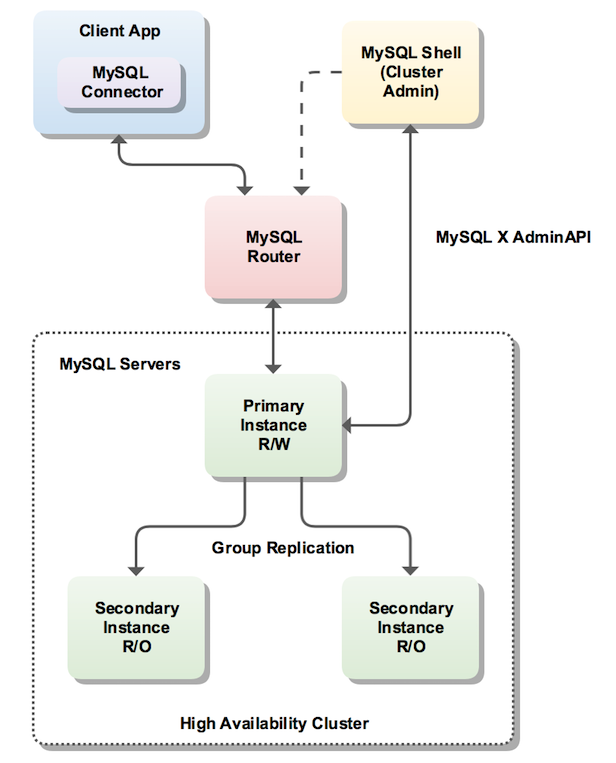Table of Contents
This chapter covers MySQL InnoDB cluster, which combines MySQL technologies to enable you to create highly available clusters of MySQL server instances.
MySQL InnoDB cluster provides a complete high availability solution for MySQL. MySQL Shell includes AdminAPI which enables you to easily configure and administer a group of at least three MySQL server instances to function as an InnoDB cluster. Each MySQL server instance runs MySQL Group Replication, which provides the mechanism to replicate data within InnoDB clusters, with built-in failover. AdminAPI removes the need to work directly with Group Replication in InnoDB clusters, but for more information see Chapter 18, Group Replication which explains the details. MySQL Router can automatically configure itself based on the cluster you deploy, connecting client applications transparently to the server instances. In the event of an unexpected failure of a server instance the cluster reconfigures automatically. In the default single-primary mode, an InnoDB cluster has a single read-write server instance - the primary. Multiple secondary server instances are replicas of the primary. If the primary fails, a secondary is automatically promoted to the role of primary. MySQL Router detects this and forwards client applications to the new primary. Advanced users can also configure a cluster to have multiple-primaries.
InnoDB cluster does not provide support for MySQL NDB Cluster. NDB Cluster depends on the NDB storage engine as well as a number of programs specific to NDB Cluster which are not furnished with MySQL Server 8.0; NDB is available only as part of the MySQL NDB Cluster distribution. In addition, the MySQL server binary (mysqld) that is supplied with MySQL Server 8.0 cannot be used with NDB Cluster. For more information about MySQL NDB Cluster, see Chapter 22, MySQL NDB Cluster 8.0. Section 22.1.6, “MySQL Server Using InnoDB Compared with NDB Cluster”, provides information about the differences between the InnoDB and NDB storage engines.
The following diagram shows an overview of how these technologies work together:
